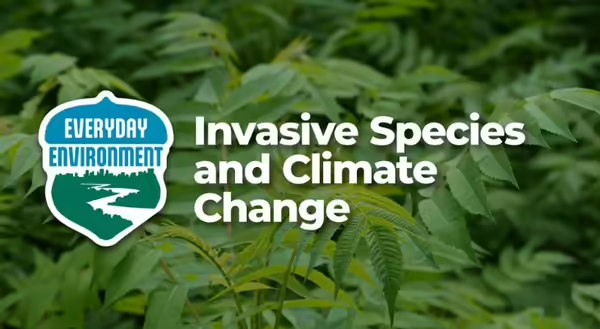
Climate change and invasive species are both huge threats to our natural resources. How are the two issues interacting? Can we expect invasive species to get worse over time due to climate change? And are these changes consistent across all invasive species?
It’s difficult to know for sure, but we do know that shifts in growing conditions will be good for some species and bad for others. This will also be true with invasive species as they are a diverse and varied group and climate change will affect them in a variety of ways.
Plant Strategies: Generalists vs. Specialists
When looking at invasive plants and climate change, it is useful to talk about two different plant strategies: being a generalist or a specialist. Generalist plants tend to be able to grow across the spectrum of habitat types - dry or wet forests, upland or lowland soils, sunny or shady environments - and have a wide tolerance of different climatic conditions. Take our native shagbark hickory tree (Carya ovata) as an example of a plant generalist. Shagbarks grow in almost any forest type, from dry and rocky to low and wet. They are found in every county in Illinois and are widespread in adjacent states.
Compare that with a plant specialist, like the black hickory tree (Carya texana). Specialists have a narrow range of habitat conditions that they can grow in and tend to not be found when conditions vary outside of that narrow window. They also tend to have a restricted range due to climatic constraints. Black hickory is only found in southern Illinois on dry, rocky slopes with adequate sunlight. Any deviation and it drops out. Habitat specialists are much more at risk from climate change than habitat generalists, as the wide tolerances for habitat and climate of generalists increase their chances that changing conditions will remain within their suitable range.
In general, invasive plants tend to be super generalists with extremely wide climatic tolerances and will likely be less impacted by shifts in climate compared to many of our native plant species. Amur honeysuckle (Lonicera maackii), for example, is found in every county in Illinois and is widespread in all of the adjacent states. It can grow in full sun to deep shade, moist forests to dry uplands, and heavy clay to sandy soils. The same is also true for many of the other invasive plants in Illinois. As many of our native species reduce in abundance due to shifts in climate change, invasive plants will continue to thrive.
Adapting to Disturbance
Droughts, ice storms, wind events, floods, and other extreme weather are predicted to increase with climate change. These all introduce disturbances into our ecosystems. Many invasive plants are promoted by disturbances that create bare soil, canopy gaps, and open niches. Disturbances are likely to increase in frequency, severity, and size with extreme weather events due to climate change, which will only encourage invasive species.
Illinois is a long state from north to south, ranging in growing zones from 5a in northwestern Illinois to 7b in the far southern end of the state. Because of this, there is a shift in invasive species composition across the state. The invasive common buckthorn tree (Rhamnus cathartica), for example, is largely confined to the northern 1/3 of Illinois, and species such as Japanese chaff flower (Achyranthes japonica) have only been found in southern Illinois. The shifts in growing conditions in Illinois are expected to increase temperatures on average, which may allow southern invasive species to expand northward, aided by the high seed production and effective long-distance dispersal mechanisms such as wind and bird-dispersed seed, both traits that are common among invasive species in Illinois. We are already seeing expansions of invasive privets (Ligustrum sp.) and Japanese stiltgrass (Microstegium vimineum) into central and northern Illinois.
Invasive insects and pathogens may also be impacted by climate change. Extreme weather events and shifts toward less suitable growing conditions for native species can introduce stress, which can reduce plant vigor and compromise their ability to defend against insects and pathogens, making them potentially more vulnerable to invasive pests.
It is important to note that controlling invasive species and promoting a high diversity of native species and intact communities are sound management strategies to both provide some resilience to climate change and lessen the impacts of invasive species.
Check out the podcast episode on this topic to hear more about climate change with Chris Evans.
Learn more
Here are a few resources that can be helpful to learn more about invasive species and climate change:
- Invasive Species: Explore Extension publications, videos, and other resources about invasive species.
- Regional Invasive Species and Climate Change Network: Illinois sits between two of these cooperatives, the Northeastern and North Central. Each has useful resources for Illinois.
- Midwest Climate Hub: Find resources for climate change in the Midwest including a broad array of natural resources and agricultural topics.
- University of Illinois Climate Page: This page provides information on climate change, mitigation strategies, expected impacts, and the new Climate Stewards Program.
- An Assessment of the Impacts of Climate Change in Illinois: This report gives a thorough assessment of the projected changes and impacts of climate change in Illinois.
Thank you for reading!
Everyday Environment is a series of blogs, podcasts, webinars, and videos that explore the intricate web of connections that tie us to the natural world.
Subscribe to Everyday Environment Newsletter More about Everyday Environment